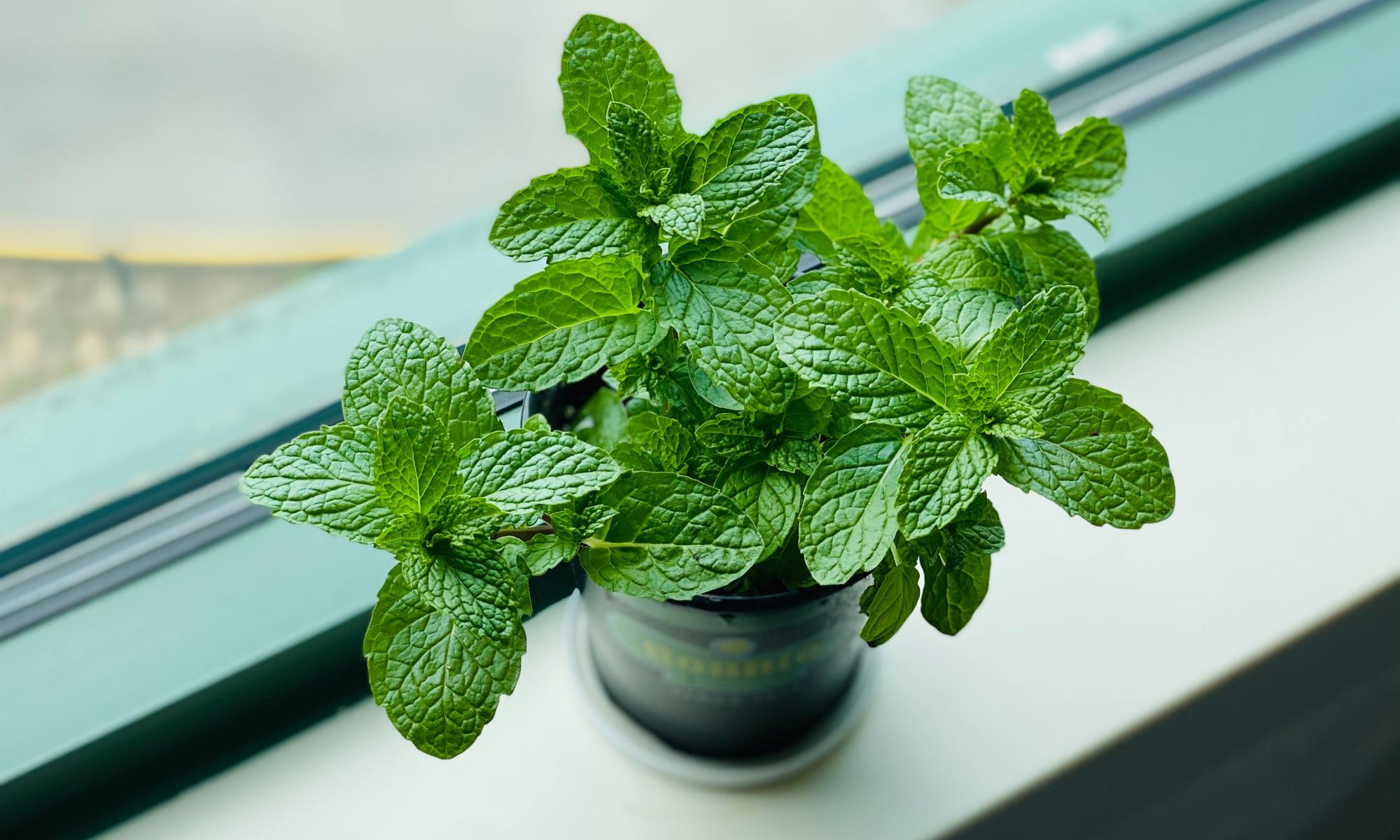Fresh mint tea with a spoonful of dandelion honey… Mint ice cream with chocolate chips… There’s something special about mint.
I used to have a mint plant in my allotment, but soon I realised I had to trim it cause mint overgrows everything. Its way of growing is fascinating – its roots work their way through the earth and new mint plants grow out of those roots. Fascinating, yet frustrating if you realise too late that it has overtaken your whole allotment! That’s why I keep mint in a big pot nowadays.

How to recognise mint
It’s usually the scent that gives mint away. Rub a leaf between your finger and thumb and it should smell like – you guessed it – mint. There are hundreds of variations out and about, but spearmint (mentha spicata) and peppermint (mentha x piperita) are the most common mint varieties. They can both be recognised by their fuzzy leaves with toothed edges. Their stalks are square. If you want to know which one’s which, go ahead and taste them. A strong menthol aftertaste means peppermint, while a sweet, light flavor means spearmint (1). Peppermint is great for tea and other drinks, while spearmint works best in cooking.
Medical use of mint
Medicinally, mint is rich in volatile oils, especially menthol. This is often used as the penetrating vapors in cough drops. These oils are stimulating and warming, causing the body to open up and sweat. This property can help you break a fever.
Peppermint, or to be more specific, the menthol in peppermint, has antiseptic and antibacterial properties that help relieve indigestion and also soothe an upset stomach. There are peppermint oil capsules available that slowly dissolve and help with indigestion.
Mint is probably most used in chewing gum and tooth paste, this is because of the antibacterial properties which inhibit bacterial growth inside the mouth, and cleanses the plaque deposition on teeth (2).
Mint in the kitchen
As I mentioned earlier, I love a cup of fresh mint tea. Harvest two or three sprigs of mint and wash them, boil some water, put the mint in a mug and pour boiling water in. You can add a spoonful of dandelion honey or any sweetener of your liking, or have it unsweetened. Mint is also used in mojito’s (one of my favorites!), crushed into the drink and as garnish. On a hot day I love cold water with fresh mint and some slices of cucumber.
In cooking, mint really adds something special to your dish. It’s a flavour you might not expect in a hot dish, but I find it really works well in curry’s and naan. I’m not a big fan of coriander and even though their flavours aren’t similar at all, I like to substitute coriander with mint.
Sources
- (1) Gardenguides.com
- (2) Food.ndtv.com


Now I want a cup of mint tea with dandelion honey xD I love mint in warm dishes too ❤
LikeLike
It’s so good, isn’t it? I think you’d enjoy this vegan mango lassi too: https://kitchenoflion.com/2018/08/31/mango-lassi/
LikeLiked by 1 person
ooh yum! That does sound delicious too
LikeLike